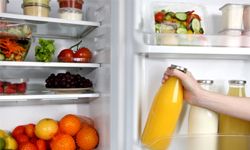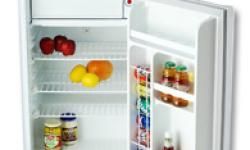If you have read How Food Preservation Works, then you know that the purpose of a refrigerator is to slow down the growth of bacteria. The purpose of a freezer is to stop bacteria completely by freezing them solid. We would freeze everything if we could, but some foods change dramatically when you freeze them -- lettuce, strawberries, milk and eggs are just a few of the foods that don't freeze well. It would also be inconvenient to thaw liquids every time you wanted to drink something.
Therefore, you want your refrigerator to be cold, but not so cold that it freezes things. The preferred temperature is somewhere between 35 and 38 degrees F (1.7 to 3.3 degrees C). Anything higher and foods will spoil too quickly (it also presents food poisoning problems, as described in several of the links below). Anything lower and freezing becomes a problem.
Advertisement
To learn more about refrigerators, check out the links on the next page.

